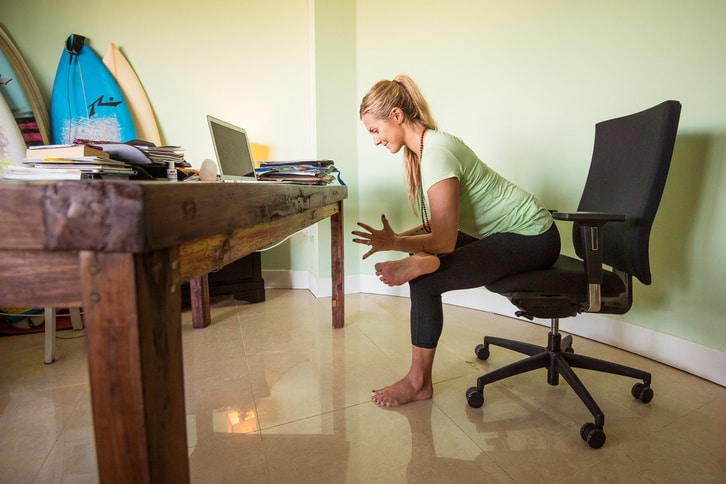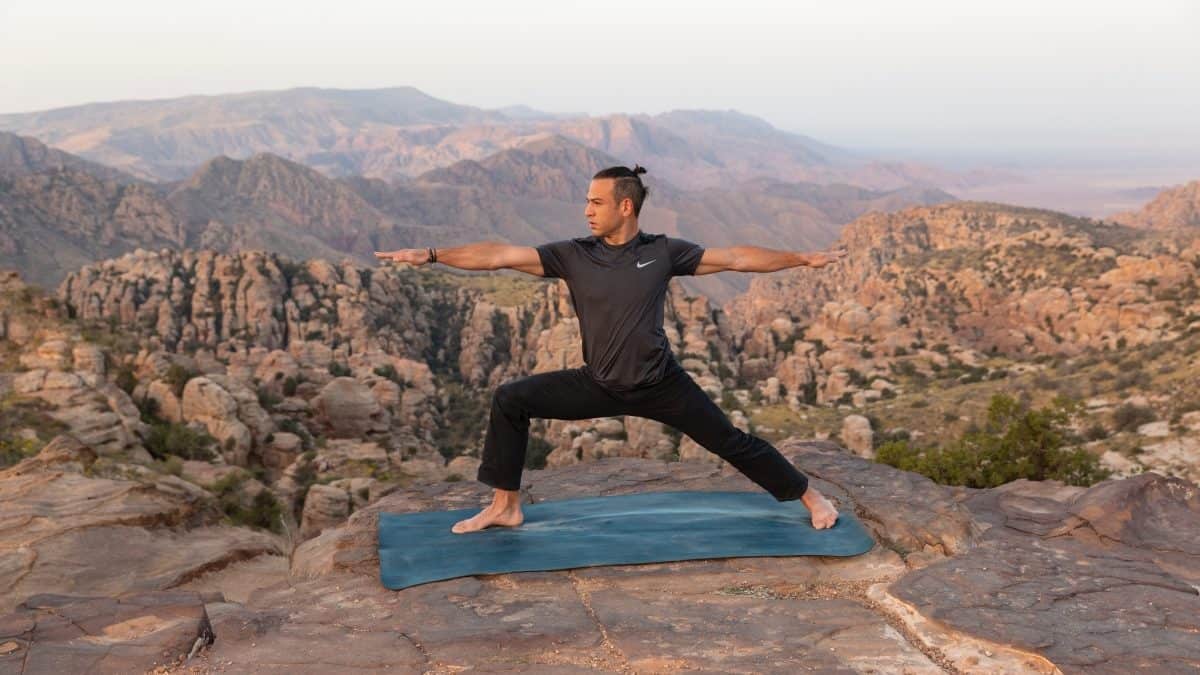
You need to master the basic movements and techniques to be able to do a handstand. A handstand requires strength and flexibility. Handstands require awareness of your entire body, including your pelvis and legs. The right technique will prevent you from making any mistakes that could slow down your progress.
An introduction to handstands for beginners
Before you attempt a handstand, it is important to know how to correctly and safely execute the pose. A practice area should be available for you to practice. You should be able to reach back towards a wall if you become unstable.

Avoid these common blunders
While practicing a handstand, one of the most common mistakes to avoid is arching your lower back. This could cause injury to your SIJ or lumbar spine. Instead of arching your back, align your spine with your biceps.
Warm-up
To avoid injury, warming up before performing a handstand is important. It also prepares your muscles and joints for the exercise. You can practice the handstand on its own or follow a routine that includes other balance exercises. The best time to work on these balance drills is after the warm-up.
You can practice your cartwheel to bail you out
Handstands can be difficult to learn. To help you bail out from a fall, you should practice your cartwheel. This will help you build up muscle memory and improve your confidence. It's best to practice your cartwheel against a wall. It is important to practice your cartwheel until you feel comfortable doing it.
Work at a lower skill level
Handstands are extremely challenging and take great strength, balance, and mobility to master. They require patience and lots of practice. They spend hours practicing handbalancing every week. They make sure to keep a straight line when performing the handstand. This line can be used as a springboard to learn more difficult skills.

Partner practice
If you're doing a handstand, it is helpful to have someone to help you. This will allow you to have someone to monitor your progress and give you an objective assessment. This is important because progress is never linear and a partner can provide valuable feedback to make your sessions more successful.
FAQ
How does yoga change your body?
Yoga helps you to relax and stretch. It makes you feel great. This is due to yoga improving flexibility, strength, stress management and overall health. This will result in improved sleep, concentration, and energy.
Yoga improves blood flow and makes it less likely that you will get the flu. This is because breathing deeply during yoga increases the amount of oxygen reaching your brain.
Yoga relieves tension, pain, and helps with stress. These postures improve posture and strengthen joints and muscles.
Yoga is a great way to stay healthy and happy.
How many types of yoga are there?
Bikram Yoga, also known as Bikram heated yoga, is the most common type of yoga. Other forms include Hatha, Ashtanga, Vinyasa, Iyengar, Kundalini, Yin, Power Yoga, Flow Yoga, Reiki, Pilates, Restorative, Aerial, etc.
What kind of yoga is for beginners?
Yoga is great for everyone, regardless of age or fitness level. It's an easy way to get fit and stay healthy. People who have tried Yoga say that they feel more positive both mentally and physically. People who have tried yoga say they feel calmer and happier.
Yoga isn't just exercise, it's a way of life that incorporates breathing exercises, stretching, meditation, and mindfulness.
There are many different types of yoga. There are many types of yoga. Some focus on strength training while others emphasize relaxation.
The type of yoga that you want depends on your goals. If you want to improve flexibility, then try Iyengar yoga. Or if you want to tone your muscles, go for Ashtanga yoga.
What do I need in order to practice yoga?
For lying down, you'll need a mattress (some of them foldable), some loose clothes, and a towel or blanket.
In addition, you may also need some props such as blocks, straps, bolsters, blankets, or towels for certain poses.
In general, however you won't need anything. It is important to have the desire to make positive life changes and the willingness to work hard to start yoga.
How long does it take yoga to work?
Yoga is a slow process, but you will always get a great workout. It takes time to build strength, flexibility, and endurance. You start slow and then gradually increase the intensity until you reach an optimal level.
Consistency is key. The more you practice, you will become better at it.
How long should a class of yoga be?
Yoga sessions are generally between 45 minutes and 1 hour. The type of Yoga you are practicing will impact the length of your yoga session. For strength-building exercises, it would be sufficient to last 45-60 minutes. For relaxation and meditation, however, an hour may be needed.
The length also varies depending on what kind of yoga class you're taking - some classes focus on moving quickly while others emphasize slow, deep stretches.
Are yoga mats expensive?
A high-quality yoga mat costs between $20-$100 depending on its size and material type.
Statistics
- About one in seven U.S. adults practiced yoga in the past 12 months, according to a 2017 national survey. (nccih.nih.gov)
- The American Psychological Association recently shared that 84% of American adults feel the impact of prolonged stress (5). (healthline.com)
- Gentle yoga has been shown to ease some of the discomforts of tender, swollen joints for people with arthritis, according to a Johns Hopkins review of 11 recent studies. (hopkinsmedicine.org)
- According to calorie estimates calculated at Harvard Medical School, the average 125-pound person burns about 120 calories in a half hour of hatha yoga, and a 185-pound person burns about 178 calories in that half hour. (everydayhealth.com)
- Start your Fall off right with 20% off All Access Membership when you sign up by 9/25! (corepoweryoga.com)
External Links
How To
Is yoga a good way to exercise?
Yoga isn't for people who just want to lose weight. Yoga is not just for those who want to lose weight. It helps them develop flexibility and balance.
Yoga isn't just exercise, but an art form. The poses are used as a way to relax and meditate. They allow us to improve our posture and concentration as well as our breathing.
Yoga is a practice of yoga. Yogis follow various forms of yoga, including Hatha, Ashtanga, Iyengar, Vinyasa, Bikram, Kundalini, Yin Yang, and Restorative.
There are many types of yoga, but they all have similar goals. Each type is focused on different aspects. Yoga styles include Hatha, pranayama (meditation), and pranayama (pranayama).
Some yoga exercises that require no equipment are:
-
Sun Salutation-This series of 12 poses starts with a forward bending, followed by 10 different positions.
-
Warrior Pose: While holding a stick, or staff, you can do a warrior pose.
-
Triangle Pose – This is a pose where you raise one leg behind your head and bend at the knee.
-
Standing Forward Bend - This position involves bending forward from the waist and putting your legs straight on the floor.
-
Seated Twist- This pose is performed while sitting on a seat or mat.
-
Cobra Pose – This is a pose where you lie flat on your back and raise your arms above your head.
-
Child's Pose - This pose is done while lying face up on the ground.
-
Cat/Cow Pose -- This pose is a mix of a cow pose and a cat pose. Your upper body should be lifted off the ground while you are lying down. Roll over on your back and place your hands underneath your shoulders.
-
Head tilt - This is a pose where you tilt your head back while keeping your eyes open.
-
Shoulder Stand – This is a standing position in which your feet are raised above your head.
-
Tree Pose – This pose involves kneeling on your heels with your hands beneath your shoulders.
-
Bow Pose - This pose is completed by bending forward from the hips and placing your palms on the ground.
-
Corpse Pose: This pose can only be held for five seconds.
-
Mountain Pose - This pose is called mountain pose because you stand tall with your spine erect.
-
Legs up the wall Pose - This is a pose where you hang upside-down from a brick wall.
-
Side Angle Pose- To achieve this pose, lean against a wall while putting your right elbow next to it.
-
Plank Position – When you are lying flat on your stomach, and your left arm and right leg extend apart from one another, this is called the plank position.
-
Bridge Pose- Balance on your elbows and toes for this pose.
-
Reverse Table Top - This position is achieved by lying on the stomach and reaching your arms towards your ceiling.
-
Handstand - This requires strength and balance. To do this pose, you can either hold yourself between two walls or a door frame.
-
Half Moon Pose – Also known as Hero Pose, this pose is also called Hero Pose. It involves standing on your hands with your toes.
-
Headstand (or Hold) - This requires strength and balance. This pose can either be performed on a wall or with a doorframe.
-
Forearm Balance -- This pose involves your forearms resting on top of a tabletop.
-
Spinal Twist: This pose is where your belly meets your arms.
-
Supported Bound Angle Pose - This pose requires support and balance. For support, use a beam or tree branch to help you balance.
-
Wide Leg Forward Fold - This pose is achieved by spreading your legs apart and touching your toes.
-
Single Pigeon Pose -- This pose is similar in style to the forward fold with one leg, but it only involves one leg.
-
Extended Puppy Dog Pose: This is a very relaxing pose. This can be done by stretching your legs straight out and bending at the knees.
-
Situated Forward Bend – This pose allows you to sit cross-legged while stretching your calves.
-
Crow Pose is a difficult pose that can be very rewarding once you have mastered it. This is achieved by elevating your arms above your head, and then lowering your arms until they are parallel to the ground.